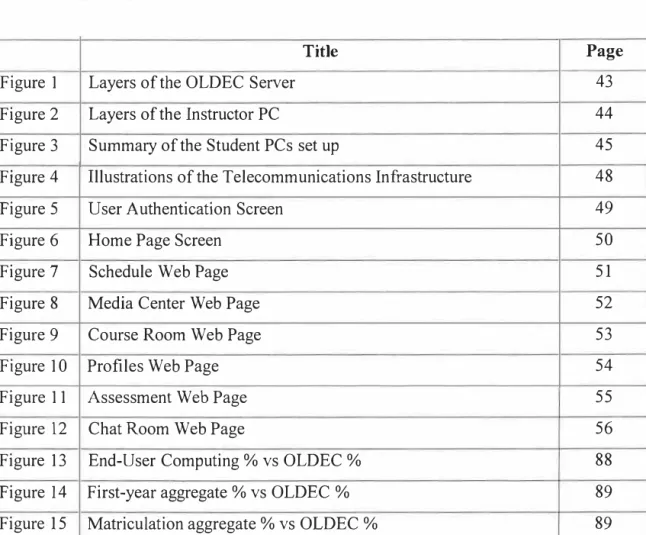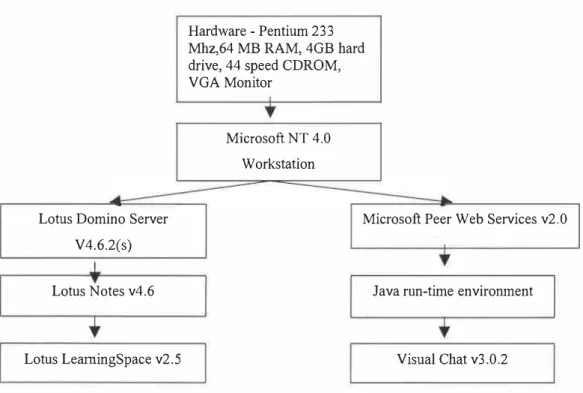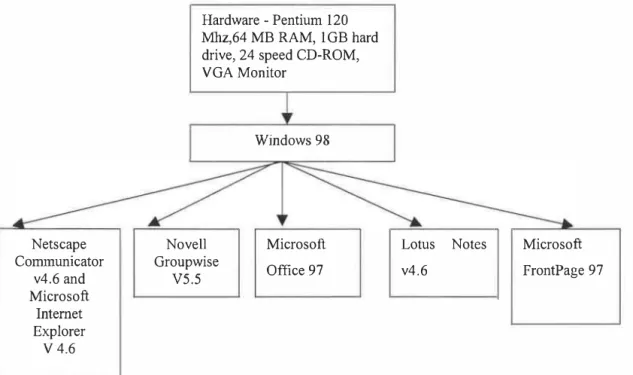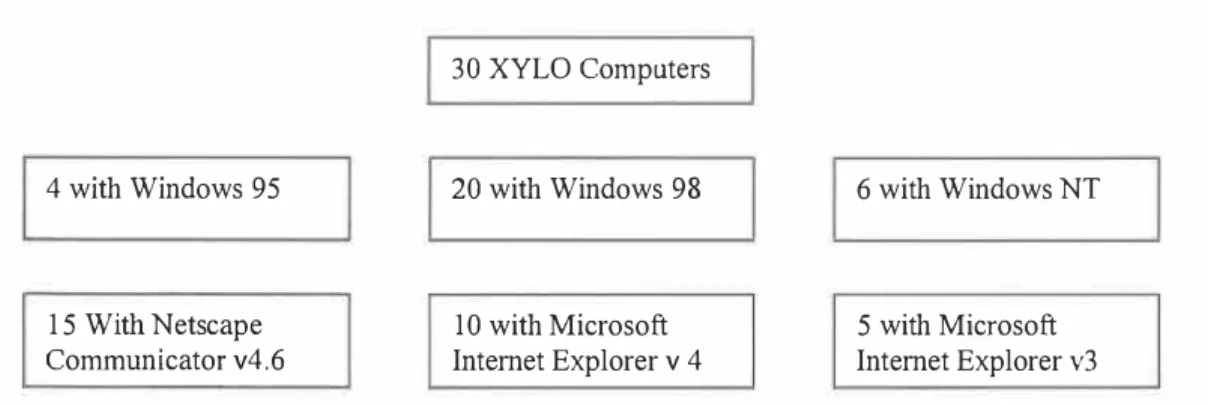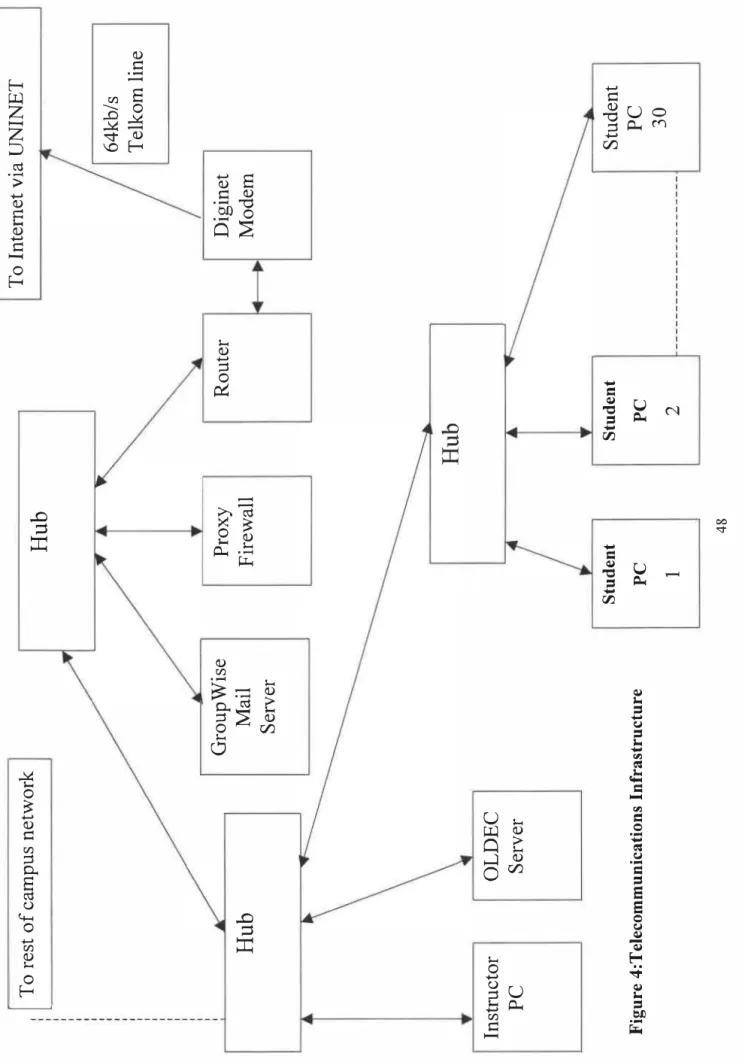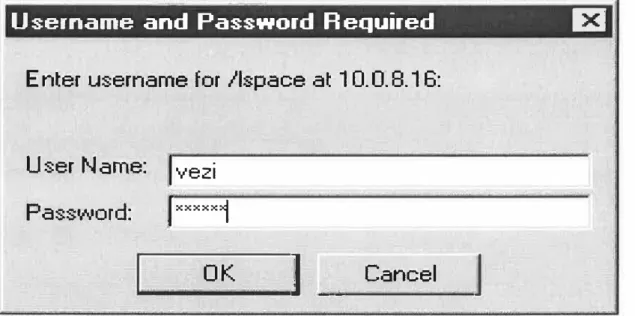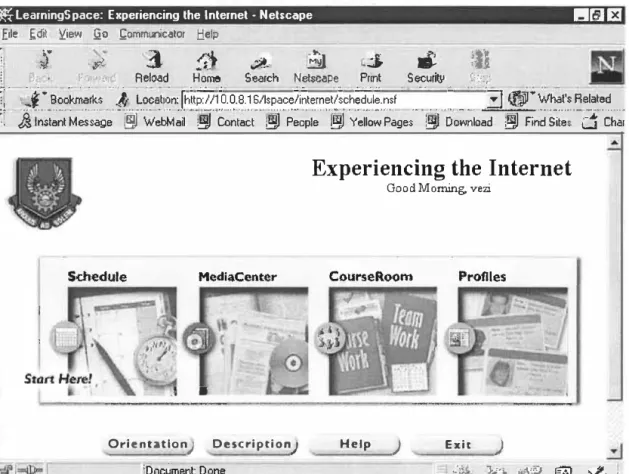An overview of South African educational institutions, using the Lotus Notes or Leaming Space software. The following are some Computer Based Education (CBE) projects being implemented at the University of Cape Town. They plan to make extensive use of LearningSpace's interoperability with other Lotus Notes knowledge repositories (http://www.lotus.com/products/learnspace/).
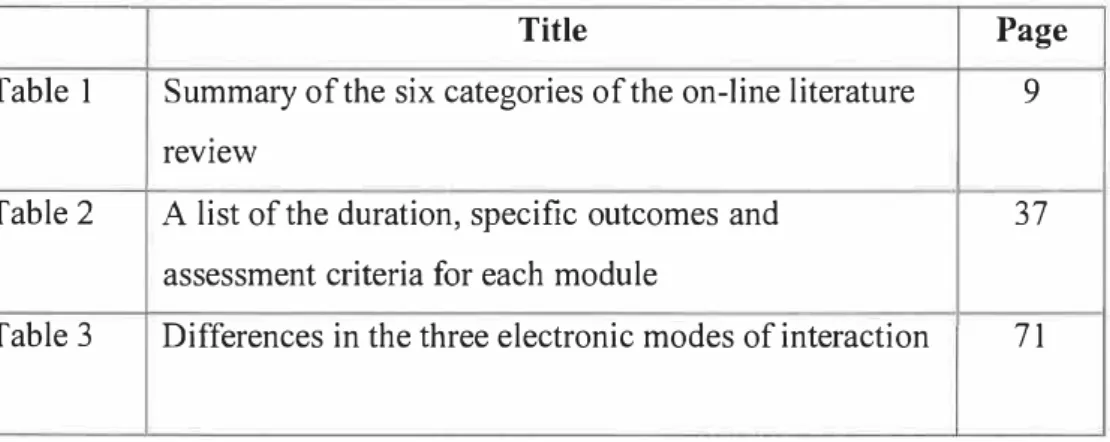
Your On-line Classroom, The Technology and Network Leaming Module 2: Instructional Design and Network Pedagogies
Technikon South Africa has realized that it is crucial to equip their academic staff with the required instructional technology skills to effectively implement technology-based teaching. This course aimed to train and equip educators and trainers in the skills of online web-based teaching.
Web Multimedia Attributes and Their Use for Leaming Module 4: Teaching and Moderation in the On-line Classroom
Developing the Course: Producing and Assembling Course Components Module 7: Class Presentation oflnstructional Design Templates Projects
Presentation of Instructional Design Templates, Formative and Summative Evaluation, Conclusion
The development of the Internet is seriously limited by the lack of qualified human resources. The credit earned by doing the OLDEC contributed to the final credit of the Information Processing II course. Only sixteen of the twenty-two students were present on the day of the survey.
00% of the students had never used the Internet and very few had the prerequisite knowledge required for OLDEC. All programming, course creation and server maintenance took place via the Instructor computer. Microsoft Office 97 was used to create some of the text and graphics for the OLDEC web pages.
Novell GroupWise version 5.5 email client was used to send and receive messages from students. Although the OLDEC server was only accessible from within Technikon, students had access to the rest of the global Internet.
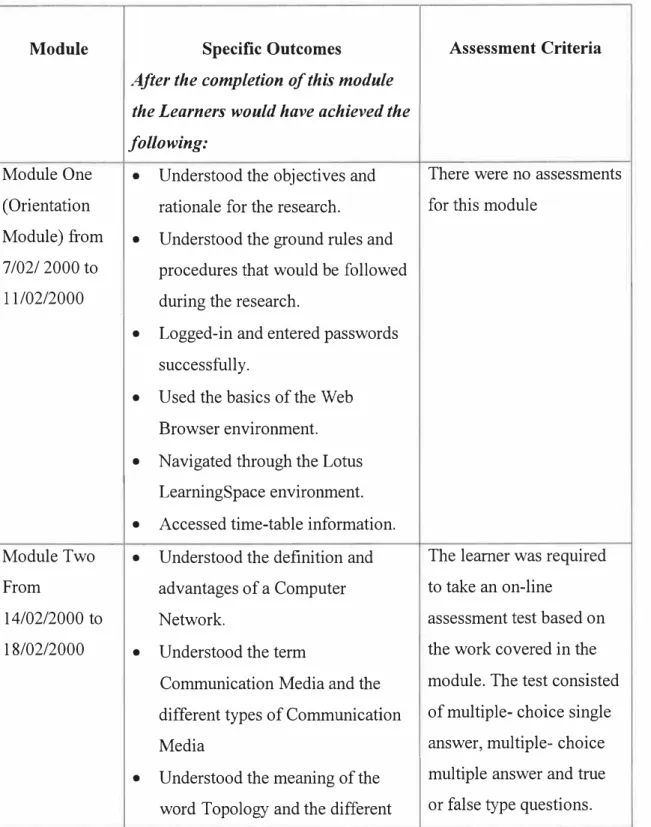
Username and Password Required 13
The system then checked whether the student was a validly registered student by comparing the input with those present in the system's databases. The system then used this login information to track all of the student's activities while navigating the system. When the student was successfully logged in and the system authenticated, the home page was displayed.
Experiencing the Internet
The schedule served as a guide to the course, similar to a syllabus, guiding the student through the assignments and materials needed to complete their work. Depending on the task design, one can directly start a discussion or task from a plan document. This allowed one to view documents in a variety of ways, similar to card catalogs in a library.
You can use it to create an FAQ (Frequently Asked Questions) list. Figure 8 shows the media center website. The classroom allowed working in assigned groups and facilitated collaboration with instructors and other classmates. You could enter topics for the whole class to read, or make them private between student and instructor, or just for team members.
Sophisticated course rooms separate discussions and assignments, making it easy for the student to identify assignments. The instructor facilitated the course room by assisting the student with assignments and discussions, providing general feedback, and answering questions to promote student success.
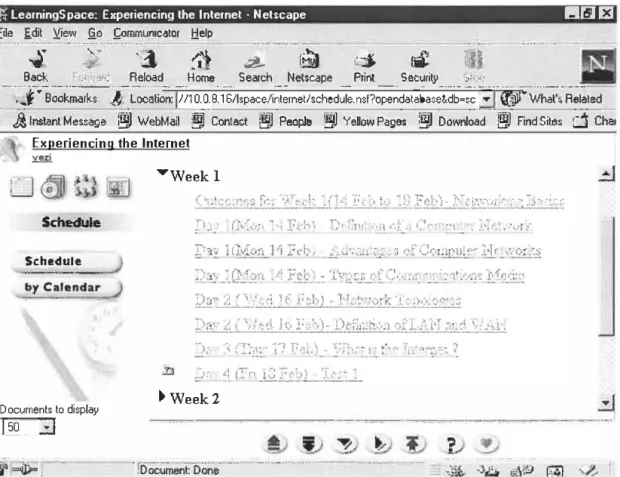
Discussions
Findings associated with the technical challenges in the setting up and maintenance of the computer hardware
The server hardware proved to be very reliable with no crashes considering it was on 24 hours a day throughout the course. Backup devices would have allowed one to copy the entire data content of the server. Students who did not have access to the Internet after working hours found it difficult to handle and revise certain modules in OLD EF.
Students without after-hours Internet access could not make hard copies of web pages for review purposes. Apart from an hour-long orientation workshop, there was no technical support from IBM for installing and maintaining the software. When telephone support was requested, it was discovered that some of the software engineers had moved to other positions in the company, had either resigned or were unavailable.
34;Notes" is a proprietary e-mail system designed by Lotus that is part of the Lotus Domino suite. Ideally, the Lotus Notes software should be installed on the Campus network with user accounts created for all 22 students, allowing for them the full benefit of all the package's functions.
Findings associated with the technical challenges in the setting up and maintenance of the telecommunications links
Communication Users do not need Users need to be Users do not need to be on at the same time. Storage Messages could Messages could not Messages could be saved to disk or saved on the IRC saved to disk or capabilities on the local server. Reference to on the local. computer or on the "communications computer or on the mail server for later history" was not News Server for.
Although a distance learning scenario had to be simulated, it was necessary to conduct a normal lecture in the first few days to inform the students about the purpose of the study, the basic rules and to provide them with information about the class schedule. Normal lectures had to be held twice due to problems with the internet connections. Although it was against the rules to provide students with assistance while they were working on the OLDEC, the instructor had to intervene at times when it became apparent that the students were making glaring errors.
When students used the lab after hours for practice at OLDEC, the instructor was not present to control the environment to simulate the distance education scenario, and face-to-face communication could occur. Once a week, one session was dedicated to surveying students to get feedback on the course.
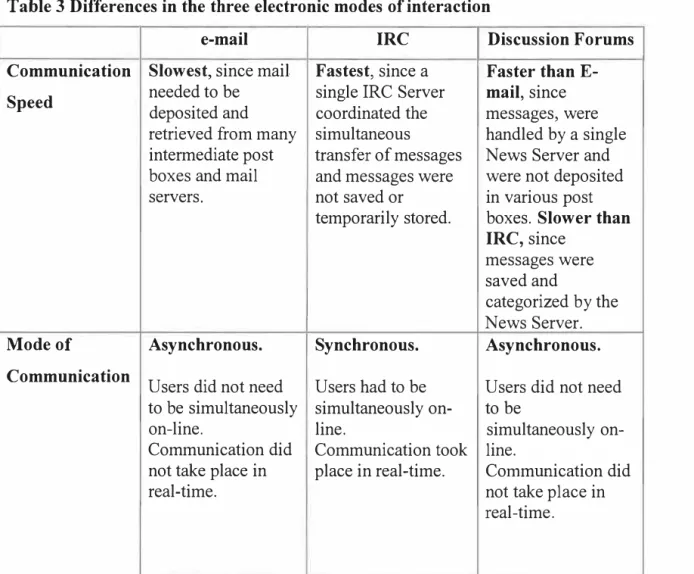
Findings related to how Learners responded to the on-line presentation of subject matter
It was not mentioned to the student that using all capital letters is equivalent to "yelling". It was found that in some cases there were spelling and grammatical errors in the content. It was found that the lesson on "email" should have come after the lesson on "web browsers" in one case, as knowledge of web browsers was required to access web-based e-mail.
It was found that when students were presented with a large amount of content, they were overwhelmed (information overload) and had difficulty identifying content that was relevant for assessment purposes. It was discovered that in some cases, the Instructor copied entire pieces of content from online websites and imported it directly into the OLDEC websites. It was found that in certain cases, where content was imported from other websites on the Internet, no copyright acknowledgments, citations, or reference information were provided.
It was therefore wrongly assumed that all students had the necessary computer skills such as keyboard skills, operating system procedures and knowledge of web browser features. It was found that some students, after completing the tasks planned for the day, experimented with other parts of the system.
Finding related to how learners went about performing research using on-line sources
The researcher experimented with the following five assessment strategies, which were administered as five separate tests: Someone had to set the appropriate dates, randomize the questions, and limit the number of times the test could be taken to maintain the reliability of the test results. What are some of the disadvantages of E-mail compared to regular postal mail?
Marks will be allocated according to the following criteria 12 points for answering the actual question. Overall this test was handled quite well and the students were quite confident in sending e-mails. The credits assigned to each question varied according to the complexity of the questions.
Five students were forced to retake the test due to technical difficulties or their absence. Most students just copied everything directly onto the screen without checking if it was relevant to the topic.
Findings related to the security measures that were introduced to make on-line assessments secure
One advantage of online assessment is that all communication is typed on the computer. 66% preferred to use computers to take online assessments, 17% preferred to use the normal hard copy answer book and 17% preferred both. In an attempt to answer this question, it was first decided to extract the following information from the Technikon's computer records about students' past performance.
End-User Computing subject percentage - this was a first-year subject that was a prerequisite for OLDEC and was completed in 1998. First-year aggregate percentage - this was the average of the percentages of all six subjects taken by students in their first year. Aggregate matriculation rate - this was the average of the percentages of all six subjects taken by students in their final.
Second, it was decided to extract information from the server about students' performance in OLDEC "On-line assessments". It was then decided to check whether there was a correlation between student performance in "traditional classroom assessments" and "online assessments".
The following is a summary of the students' responses regarding their overall impressions of the course and the way it was conducted. Although high quality components were used in the manufacture of the server, it had low component specifications. It is recommended that at least one high-speed laser printer be installed in each of the 60-seat computer labs.
It is recommended that the selection of the OLD EC software is done after a complete needs analysis. In this project, the concept of a "Virtual Classroom" did not exist in the true sense of the word. The technical challenges in setting up and maintaining the computer software were by far the biggest obstacle in the project.
Some of the problems included the lack of adequate technical support and using the wrong server operating system. The study compared students' performance in online assessments to their previous performance in traditional classroom assessments. The results of the survey seemed to indicate that more students preferred a combination of traditional face-to-face teaching and on-line teaching.
Which of the following computer devices cannot be shared between each computer in a computer network.
